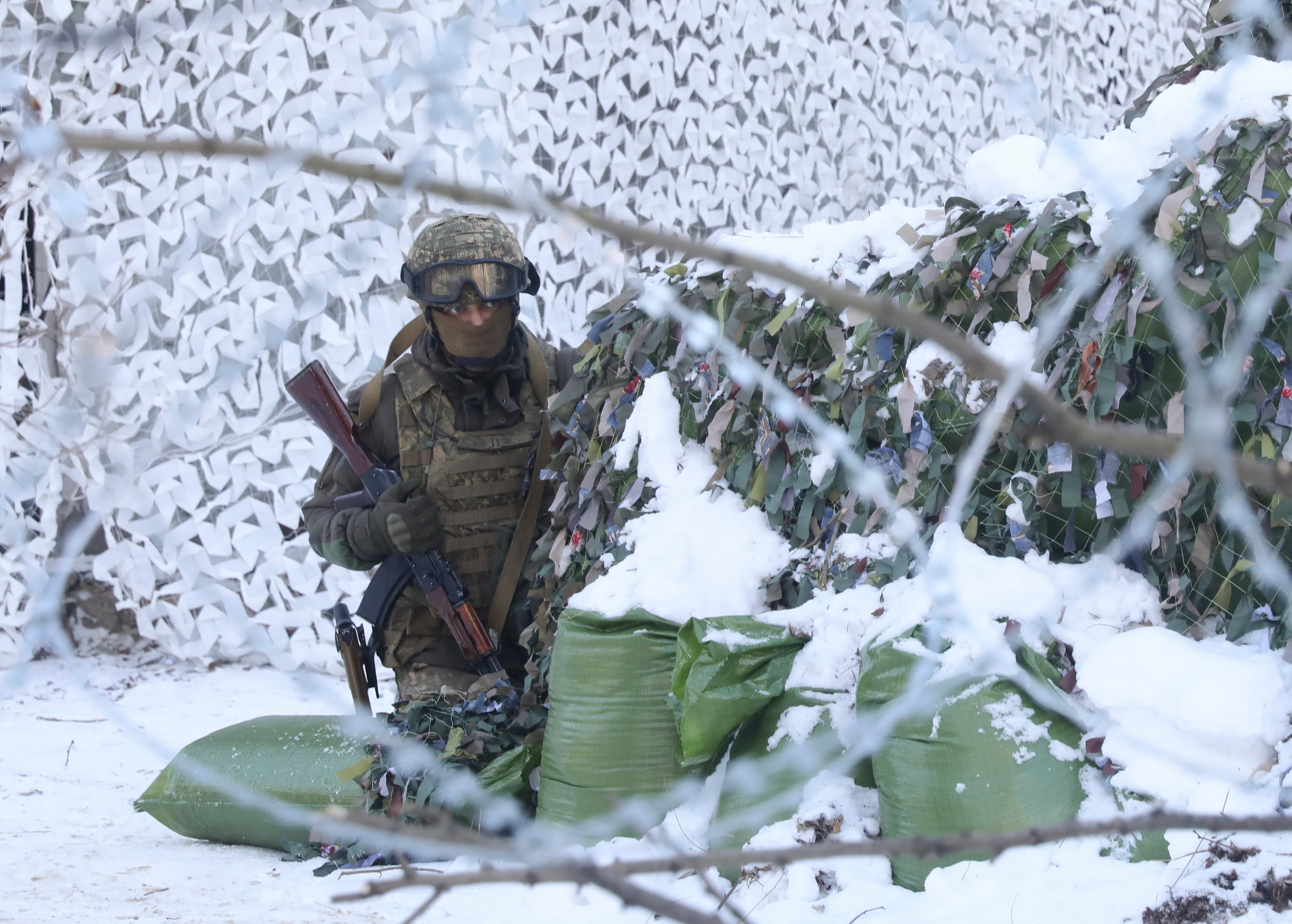WASHINGTON ― In the wake of Russian President Vladimir Putin’s recent nuclear orders to his forces, the top military officer responsible for America’s nuclear arsenal said the U.S. has not made any moves of its own.
“I am satisfied with the posture of my forces. I have made no recommendations to make any changes,” U.S. Strategic Command’s chief, Adm. Charles Richard, told a House Armed Services subpanel Tuesday. “All I’ll say in open session is ... nuclear command and control is in its most defended, most resilient lineup that it’s ever been in, in its history.”
Richard, whose comment came at a posture hearing on the military’s missile defense, space and nuclear weapons, said he could only say more in a closed session set to start after. Officials largely declined to discuss U.S. or Russian moves in the open session, in light of the ongoing conflict, and Richard testified by video from his command’s Omaha headquarters.
The remarks came as Russian nuclear submarines sailed off for drills in the Barents Sea and mobile missile launchers roamed snow forests Tuesday in Siberia after Putin ordered his nation’s nuclear forces put on high alert over tensions with the West over the invasion of Ukraine.
Russia’s Northern Fleet said in a statement several of its nuclear submarines were involved in exercises designed to “train maneuvering in stormy conditions.” It said multiple warships tasked with protecting northwest Russia’s Kola Peninsula, where several naval bases are located, would join the maneuvers.
In the Irkutsk region of eastern Siberia, units of the Strategic Missile Forces dispersed Yars intercontinental ballistic missile launchers in forests to practice secret deployment, the Russian Defense Ministry said in a statement.
The military didn’t say whether the drills were linked to Putin’s order on Sunday to put the country’s nuclear forces on high alert. It also was unclear whether the exercises represented a change in the country’s normal nuclear training activities or posture.
Putin’s decree applied to all parts of the Russian nuclear triad, which like in the U.S., consists of nuclear submarines armed with intercontinental ballistic missiles, nuclear-tipped land-based ICBMs and nuclear-capable strategic bombers. The United States and Russia have the two largest nuclear arsenals in the world, by far.

The U.S. said Putin’s move unnecessarily escalated an already dangerous conflict, but so far has announced no changes in its nuclear weapons alert level as the U.S. is trying to discern what Putin meant by the order for his nuclear forces to be at “special combat readiness.”
“It’s not a term of art in what we understand to be Russian [nuclear] doctrine,” a senior defense official said Monday, speaking on condition of anonymity. “So that’s why we’re analyzing it and reviewing it to try to understand what exactly it means.”
The U.S. has not seen “noticeable muscle movements” or changes to Russia’s nuclear posture, the official said.
The White House said it saw “no reason to change” its nuclear alert levels at this time, and President Joe Biden assured Americans they should not fear nuclear war.
U.S. officials and experts have interpreted Putin’s move as bluster, but say he has to be taken seriously, given his unpredictable aggression against Ukraine.
White House press secretary Jen Psaki told ABC on Sunday Putin’s decision to put his nation’s nuclear deterrent forces on a state of heightened alert was part of a “pattern” of “manufacturing threats that don’t exist.”
House Armed Services Committee Chairman Adam Smith, D-Wash., on Monday expressed confidence in assurances from U.S. national security officials that America has a strong nuclear deterrent in place.
“Whatever Putin’s rhetoric might be, I think we are further from the nuclear brink than what some of the comments might be because we have made it very clear that [using nuclear weapons] is a line that cannot be crossed,” Smith told CNN.
But Jon Wolfsthal, a former senior director at the National Security Council and former adviser to then-Vice President Biden, said Biden or top defense officials need to make it clearer by calling their counterparts to say they consider the conflict non-nuclear, and that if Putin uses nuclear weapons, “his days are numbered.”
“I don’t think Putin is suicidal, and he knows that using nuclear weapons against NATO would be suicide, but it’s not clear that he knows using them against Ukraine would be suicide,” Wolfsthal said. “So we need to be pretty clear.”
Wolfsthal said Putin’s nuclear saber rattling is meant to reinforce his threat to the West to back off and to cause fissures within NATO.
“We have different allies with different views, and there are those worried about nuclear use in Europe,” Wolfsthal said. “He’s trying to use the playbook he was raised on in the KGB, to try to sow that dissent. It doesn’t mean it’s not true, and it doesn’t mean it’s not a risk.”
Observers have questioned whether Putin is acting rationally, with a former U.S. ambassador to Russia, Michael McFaul, saying this week Putin appears “increasingly unhinged.”
Sen. Marco Rubio, R-Fla., the Senate Intelligence Committee’s top Republican, tweeted last week, “I wish I could share more but for now I can say it’s pretty obvious to many that something is off with Putin.”
Fiona Hill, former official at the National Security Council specializing in Russian and European affairs, said in an interview with Politico published Monday “we’re right there,” in terms of a potential nuclear weapons threat.
“Every time you think, ‘No, he wouldn’t, would he?’ Well, yes, he would,” Hill said. “And he wants us to know that, of course.
“It’s not that we should be intimidated and scared,” she added. “We have to prepare for those contingencies and figure out what is it that we’re going to do to head them off.”
With reporting by The Associated Press.
Joe Gould was the senior Pentagon reporter for Defense News, covering the intersection of national security policy, politics and the defense industry. He had previously served as Congress reporter.




